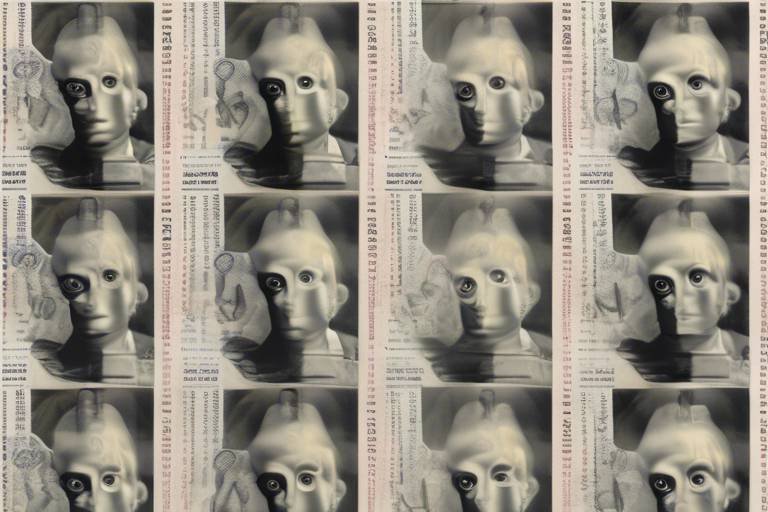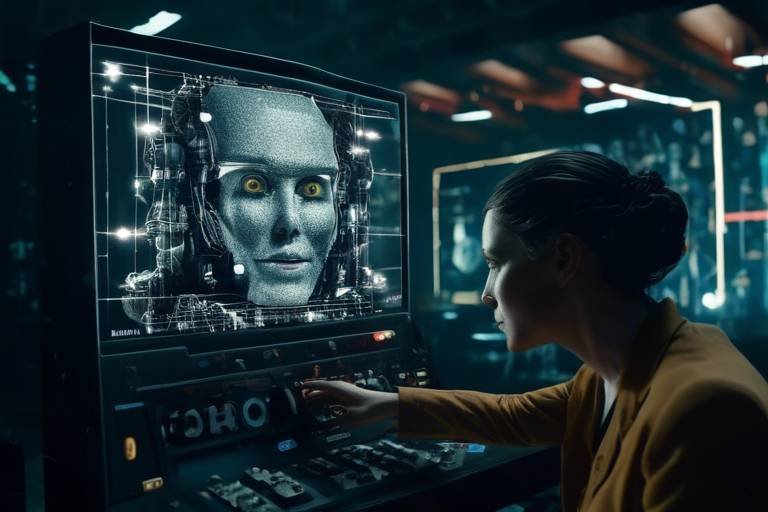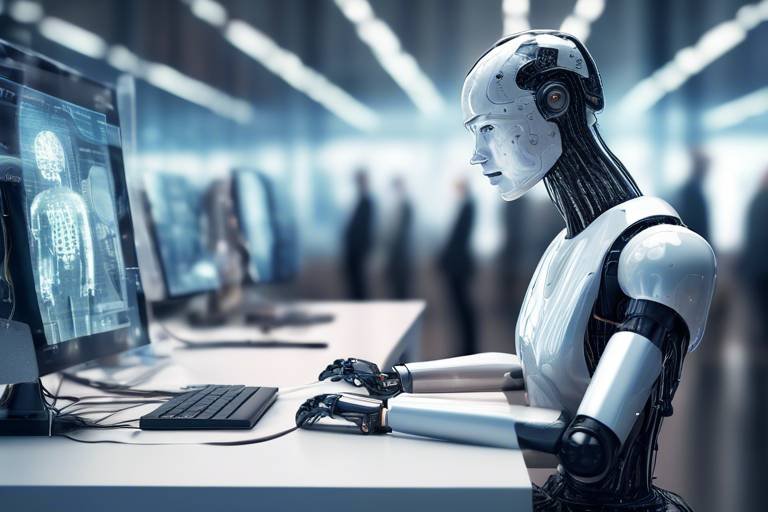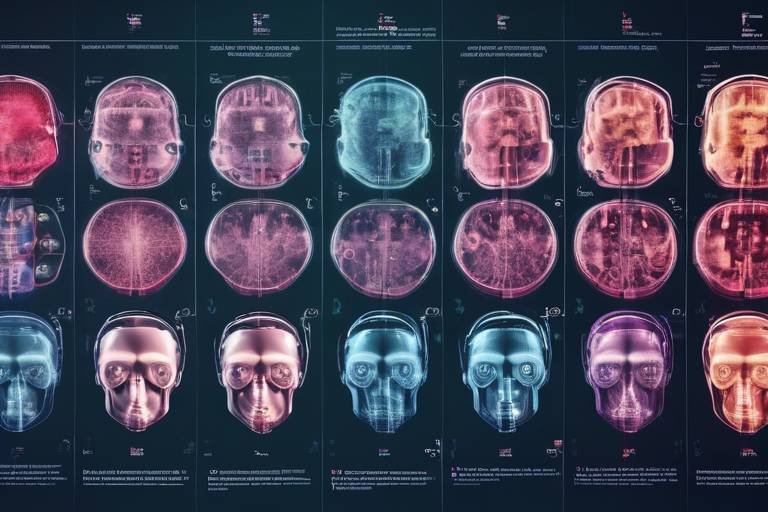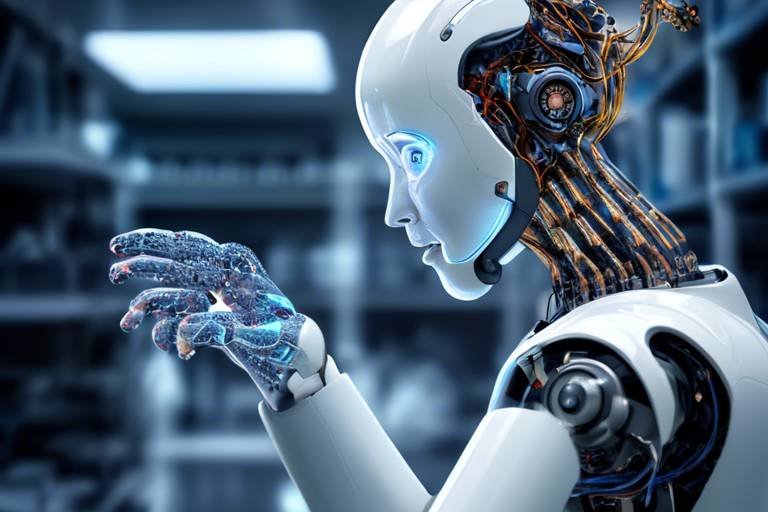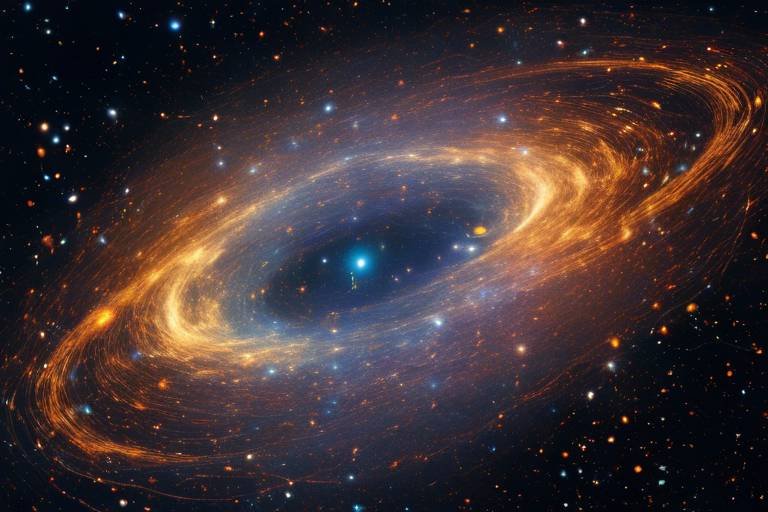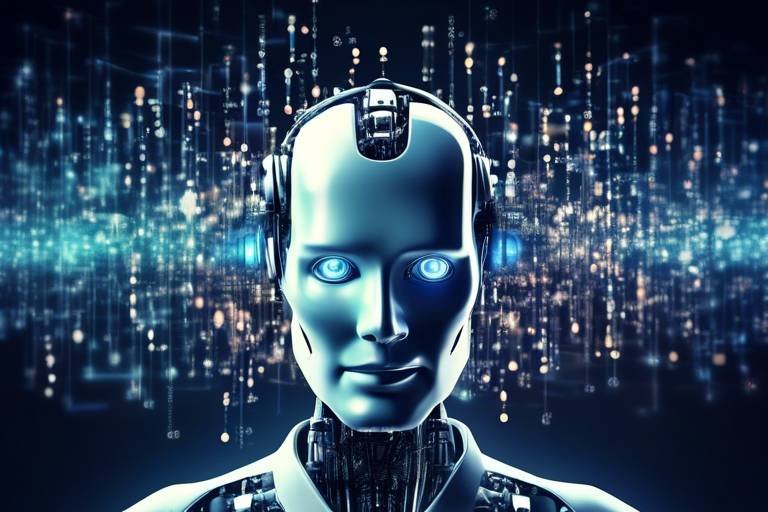AI and Its Potential in Astrophysics
In the vast expanse of the universe, where mysteries abound and the unknown beckons, artificial intelligence (AI) is emerging as a transformative force in the field of astrophysics. This article delves into the remarkable ways in which AI is reshaping our understanding of celestial phenomena, enhancing data analysis, and revolutionizing research methodologies. Imagine a world where astrophysicists can sift through mountains of astronomical data with the ease of a swipe on a smartphone screen—this is not just a dream; it is becoming a reality thanks to AI.
Astrophysics has always been a field driven by data. From the early days of stargazing to the sophisticated telescopes of today, the quest to understand the universe has relied heavily on collecting and analyzing vast amounts of information. However, the sheer volume of data generated by modern telescopes and observatories can be overwhelming. Here’s where AI steps in, acting as a powerful ally that can process and analyze this data far more efficiently than traditional methods. With AI, we are not just observing the cosmos; we are beginning to decode its secrets.
Think of AI as a skilled detective in the realm of astrophysics. It tirelessly examines intricate patterns in cosmic data, revealing insights that were previously hidden from human eyes. For instance, when researchers are on the hunt for exoplanets, AI algorithms can analyze light curves—variations in brightness from distant stars—much faster and more accurately than any human could. This capability allows scientists to discover new worlds beyond our solar system, expanding our understanding of planetary systems and potentially habitable environments.
Moreover, the implications of AI extend beyond mere discovery. In the realm of gravitational wave detection, AI is making waves—pun intended! It enhances our ability to observe cosmic events such as black hole mergers and neutron star collisions, phenomena that were once thought to be beyond our grasp. By identifying the faint signals of these events, AI is helping us piece together the puzzle of our universe's history.
As we look ahead, the future of AI in astrophysics is not just promising; it is exhilarating. With ongoing advancements in machine learning and data processing, we can expect AI to continue pushing the boundaries of what we know. Imagine simulations that can model the formation of galaxies or the evolution of the universe itself, all powered by AI's incredible computational capabilities. The potential for groundbreaking discoveries is immense, and the journey has only just begun.
In summary, AI is not merely a tool in the astrophysicist's toolkit; it is a revolutionary force that is reshaping the landscape of cosmic exploration. As we continue to harness its power, who knows what astonishing revelations await us in the infinite tapestry of the universe?
- How is AI used in astrophysics? AI is used to analyze large datasets, recognize patterns, and simulate cosmic phenomena, enhancing our understanding of the universe.
- What are some specific applications of AI in this field? AI applications include identifying exoplanets, detecting gravitational waves, and improving observational techniques through automated telescope operations.
- What is the future of AI in astrophysics? The future looks bright, with AI expected to lead to new discoveries and a deeper understanding of cosmic events and structures.

Understanding AI in Astrophysics
Artificial intelligence (AI) is not just a buzzword; it’s a powerful tool that’s reshaping the landscape of astrophysics. Imagine trying to navigate a vast ocean of data without a map or compass. That’s what astrophysicists faced before AI stepped in. With its ability to process and analyze colossal amounts of information, AI is enhancing our understanding of celestial phenomena and helping researchers manage the overwhelming data generated by modern telescopes and observatories.
At its core, AI encompasses a variety of technologies, from machine learning to neural networks, all designed to mimic human cognitive functions. This means that AI can learn from data, make decisions, and even predict outcomes. In astrophysics, this capability is revolutionary. With AI, researchers can automate tedious tasks, allowing them to focus on more complex problems that require human intuition and creativity.
One of the most significant advantages of AI in astrophysics is its ability to enhance data analysis. Traditional methods often fall short when it comes to deciphering the intricate patterns hidden within cosmic data. However, AI excels at this task. By employing sophisticated algorithms, it can sift through vast datasets to uncover trends and anomalies that would likely go unnoticed. For instance, when analyzing light curves from distant stars, AI can identify subtle changes indicating the presence of exoplanets, something that would take human researchers much longer to achieve.
Moreover, AI isn’t just about finding patterns; it’s also about simulating complex cosmic phenomena. Think of it as a digital laboratory where astrophysicists can run experiments on the formation of galaxies or the lifecycle of stars. These simulations provide insights that are crucial for understanding the universe's evolution. With the help of AI, researchers can create models that reflect reality more accurately, leading to better predictions and a deeper understanding of cosmic events.
In summary, the integration of AI into astrophysics is like adding a new dimension to the field. It enhances data analysis, improves observational techniques, and allows for sophisticated simulations. As we continue to harness the power of AI, the possibilities for discovery and understanding in astrophysics are virtually limitless.

Data Analysis and Machine Learning
In the vast universe of astrophysics, data analysis is akin to navigating a cosmic ocean filled with countless stars, galaxies, and phenomena waiting to be discovered. The sheer volume of astronomical data generated by telescopes and space missions can be overwhelming, but this is where artificial intelligence (AI) steps in as a game-changer. By leveraging machine learning algorithms, researchers can sift through these massive datasets with a precision and speed that was previously unimaginable.
Imagine trying to find a specific star in a sky crowded with millions of twinkling lights. Traditional methods of data analysis often left researchers feeling like they were searching for a needle in a haystack. However, with AI, the process becomes more like having a powerful spotlight that illuminates the most relevant information. Machine learning algorithms are designed to recognize complex patterns, making it possible to identify relationships and correlations within the data that would otherwise go unnoticed.
One of the most exciting applications of machine learning in astrophysics is in the field of pattern recognition. This involves training AI models to detect anomalies or specific features within cosmic data. For instance, when analyzing light curves from distant stars, AI can help pinpoint the subtle dips in brightness that indicate the presence of an exoplanet. This ability to recognize intricate patterns not only speeds up the discovery process but also enhances our understanding of the universe's structure and composition.
Here are a few key areas where machine learning is making a significant impact:
- Identifying Exoplanets: AI techniques analyze light curves with remarkable accuracy, allowing scientists to efficiently discover new worlds beyond our solar system.
- Gravitational Wave Detection: Machine learning enhances our ability to detect and analyze gravitational waves, providing insights into cosmic events like black hole mergers.
- Galaxy Classification: AI can classify galaxies based on their shapes and features, helping astronomers understand the evolution of these massive structures over time.
Moreover, the use of AI in data analysis is not limited to merely identifying celestial bodies. It also extends to simulating cosmic phenomena and predicting future events. For example, machine learning models can simulate the formation of galaxies or the behavior of dark matter, offering a glimpse into the universe's past and future. This predictive capability is invaluable, as it allows astrophysicists to formulate hypotheses and design experiments that could lead to groundbreaking discoveries.
As we continue to harness the power of machine learning, the potential for discovery in astrophysics expands exponentially. With each advancement in AI technology, we are not just scratching the surface of what is possible; we are diving deeper into the cosmic ocean, uncovering secrets that have long eluded us. The fusion of AI and astrophysics is not just a trend; it is a revolution that promises to reshape our understanding of the universe and our place within it.

Pattern Recognition in Cosmic Data
In the vast expanse of the universe, data is generated at an astonishing rate. Every moment, telescopes and satellites capture information about distant stars, galaxies, and other celestial phenomena. But how do scientists make sense of this overwhelming torrent of data? Enter artificial intelligence, a game-changer in the realm of astrophysics. AI's ability to recognize intricate patterns within cosmic data has opened new avenues for discovery, enabling researchers to identify celestial bodies, events, and anomalies that were once elusive.
Imagine trying to find a needle in a haystack; that's what analyzing astronomical data used to feel like. Traditional methods often fell short, unable to sift through the noise to find meaningful signals. However, with the advent of machine learning algorithms, this process has transformed dramatically. These algorithms are designed to learn from data and improve their accuracy over time, making them exceptionally adept at recognizing patterns that might escape human eyes.
For instance, AI can analyze vast datasets from telescopes and automatically identify features such as the light curves of stars. These light curves are crucial for understanding various cosmic phenomena, including the presence of exoplanets. When a planet passes in front of a star, it causes a slight dip in the star's brightness. AI algorithms can detect these subtle changes, allowing scientists to pinpoint potential exoplanets with remarkable precision.
Moreover, AI's pattern recognition capabilities extend to more complex events, such as gravitational waves. When two black holes collide, they produce ripples in spacetime that can be detected on Earth. AI systems can analyze the data collected from gravitational wave observatories like LIGO, filtering through noise and identifying the signatures of these cosmic events with incredible accuracy. This not only enhances our understanding of such phenomena but also paves the way for future research in astrophysics.
To illustrate the impact of AI on pattern recognition in cosmic data, consider the following table that summarizes key applications:
| Application | Description | Impact |
|---|---|---|
| Exoplanet Detection | AI analyzes light curves to identify planets orbiting distant stars. | Increased efficiency in discovering new worlds. |
| Gravitational Wave Analysis | AI detects and classifies gravitational wave signals from cosmic events. | Improved understanding of black hole mergers and neutron star collisions. |
| Galaxy Classification | AI categorizes galaxies based on their shapes and features. | Enhanced understanding of galaxy formation and evolution. |
In conclusion, the integration of AI in pattern recognition has revolutionized the field of astrophysics. By leveraging these advanced technologies, researchers can now unveil the mysteries of the universe more efficiently than ever before. As we continue to refine these AI systems, the potential for groundbreaking discoveries remains boundless. Who knows what secrets the cosmos may reveal next with the help of artificial intelligence?

Identifying Exoplanets
Identifying exoplanets—those fascinating worlds orbiting stars beyond our solar system—has become one of the most thrilling areas of research in astrophysics. Thanks to the remarkable capabilities of artificial intelligence (AI), scientists are now able to detect these distant planets with unprecedented accuracy and efficiency. Imagine trying to find a needle in a haystack, but this time the haystack is the vastness of space, and the needle is a tiny, distant planet. This is where AI steps in, transforming a nearly impossible task into a feasible one.
At the heart of AI's power in exoplanet detection lies its ability to analyze light curves—graphs that depict the brightness of a star over time. When a planet passes in front of its host star, it blocks a small portion of the star's light, creating a characteristic dip in the light curve. Traditional methods of analyzing these light curves can be laborious and time-consuming. However, machine learning algorithms can process vast amounts of data quickly, identifying these dips and determining whether they are indeed caused by an exoplanet or by other factors, such as star spots or noise.
Moreover, the use of AI allows for the incorporation of multiple data sources, enhancing the reliability of exoplanet detection. For instance, by combining data from various telescopes and missions, AI can cross-reference findings to confirm the presence of an exoplanet. This multi-faceted approach not only increases the chances of discovery but also helps in characterizing the exoplanets more accurately. Here’s a brief overview of how AI contributes to identifying exoplanets:
- Data Processing: AI algorithms can sift through terabytes of data from telescopes like Kepler or TESS (Transiting Exoplanet Survey Satellite) in record time.
- Pattern Recognition: Machine learning excels at recognizing patterns in data, allowing it to detect subtle signals that indicate the presence of an exoplanet.
- Predictive Modeling: AI can build models that predict where exoplanets might be found based on existing data, guiding future observations.
As we continue to refine these AI techniques, the rate of exoplanet discoveries is expected to soar. Recent advancements have already led to the identification of thousands of exoplanets, many of which are located in the habitable zones of their respective stars, raising exciting possibilities about the existence of life beyond Earth.
In summary, the integration of AI in identifying exoplanets is not just a technological advancement; it is a paradigm shift in our understanding of the universe. Each new discovery adds a piece to the cosmic puzzle, helping us understand not only where these planets are but also what they might be like. The journey to uncover the secrets of exoplanets is just beginning, and with AI as our ally, the possibilities are truly limitless.
- What is an exoplanet? An exoplanet is a planet that orbits a star outside of our solar system.
- How does AI help in detecting exoplanets? AI analyzes light curves and other data to identify patterns that indicate the presence of exoplanets.
- Why are exoplanets important? Studying exoplanets helps us understand the formation of planetary systems and the potential for life beyond Earth.

Gravitational Wave Detection
Gravitational wave detection is one of the most exciting frontiers in astrophysics, and artificial intelligence (AI) is leading the charge in revolutionizing how we observe and interpret these elusive ripples in spacetime. When two massive celestial bodies, like black holes or neutron stars, collide, they create gravitational waves that travel across the universe, carrying with them vital information about these cataclysmic events. However, detecting these waves is no easy feat. Traditional methods often struggle to sift through the noise of background signals, making it challenging to identify genuine gravitational wave events.
This is where AI comes into play. By leveraging advanced machine learning algorithms, researchers can enhance the sensitivity of gravitational wave detectors such as LIGO (Laser Interferometer Gravitational-Wave Observatory) and Virgo. These algorithms are designed to analyze vast amounts of data in real-time, filtering out irrelevant signals and honing in on potential gravitational wave events. The power of AI lies in its ability to learn from previous data, improving its detection capabilities over time. For instance, by training on a dataset of known gravitational wave events, AI can develop a nuanced understanding of what a genuine signal looks like, allowing it to identify similar patterns in new data.
Moreover, AI not only aids in detection but also plays a crucial role in the analysis of the signals once they are detected. The characteristics of gravitational waves can reveal a wealth of information about their sources, such as their masses, spins, and the distance from Earth. AI algorithms can quickly process these signals, extracting key features and making predictions about the astrophysical phenomena that generated them. This rapid analysis is essential for timely follow-up observations with telescopes and other instruments, enabling a multi-messenger approach to studying cosmic events.
As we look to the future, the integration of AI in gravitational wave detection holds immense promise. The ongoing refinement of these technologies could lead to the discovery of new types of astronomical events, enhancing our understanding of the universe’s most violent and energetic processes. With AI continuously evolving, we may soon uncover secrets of the cosmos that were once thought to be beyond our reach.
- What are gravitational waves? Gravitational waves are ripples in spacetime caused by the acceleration of massive objects, such as merging black holes or neutron stars.
- How does AI help in detecting gravitational waves? AI enhances the detection process by filtering out noise and identifying patterns in the data that correspond to gravitational wave events.
- What is LIGO? LIGO is a large-scale observatory designed to detect gravitational waves through laser interferometry. It played a crucial role in the first detection of gravitational waves in 2015.
- Can AI predict gravitational wave events? Yes, AI can analyze previous data to learn what gravitational wave signals look like, improving its ability to predict and identify new events.

Simulating Cosmic Phenomena
When we think about the vastness of the universe, it can feel a bit like trying to grasp the ocean with a single cup. The complexity of cosmic phenomena is staggering, and this is where artificial intelligence steps in to help us make sense of it all. AI-driven simulations are not just fancy tools; they are revolutionizing how we understand the universe's intricate workings. Imagine being able to create a virtual model of a galaxy, complete with swirling stars and dark matter, all generated by algorithms that can process data at lightning speed!
These simulations allow astrophysicists to delve deep into the mechanics of cosmic events. For instance, when studying the formation of galaxies, AI can analyze vast datasets from various telescopes and extract meaningful patterns that would be nearly impossible for humans to discern. This is akin to having a super-sleuth detective who can sift through mountains of evidence to find the crucial clue that explains a mystery. By simulating different cosmic scenarios, researchers can test theories about how galaxies collide, how stars are born, and even how black holes influence their surroundings.
One of the most exciting aspects of AI simulations is their ability to predict future cosmic events. By using historical data and advanced algorithms, scientists can model potential outcomes of various astrophysical processes. For example, they can simulate the collision of two galaxies or the birth of a star, providing insights into how these events unfold over time. This predictive power is essential not just for understanding the past but also for preparing for future discoveries that could change our understanding of the universe.
Moreover, these simulations are becoming increasingly sophisticated. With the advent of machine learning techniques, AI can improve its models through experience, much like how we learn from our mistakes. This means that as more astronomical data becomes available, AI can refine its simulations to produce even more accurate representations of cosmic phenomena. It’s like upgrading from a simple map to a detailed GPS system that accounts for real-time traffic conditions; the more data it has, the better it gets!
In summary, the integration of AI in simulating cosmic phenomena is not just a technological advancement; it’s a paradigm shift in astrophysics. By leveraging these powerful tools, researchers are unlocking secrets of the universe that were once thought to be beyond our reach. As we continue to push the boundaries of what AI can do, the possibilities for understanding our universe are truly limitless.
- What role does AI play in astrophysics?
AI enhances data analysis, pattern recognition, and simulation processes in astrophysics, allowing researchers to gain insights into cosmic phenomena. - How does AI improve the detection of exoplanets?
AI analyzes light curves from stars to identify potential exoplanets, streamlining the discovery process of new worlds. - Can AI predict cosmic events?
Yes, AI can simulate and predict outcomes of various cosmic processes, providing valuable insights into future astronomical events. - What are the benefits of AI-driven simulations?
These simulations allow for a deeper understanding of complex cosmic phenomena, improve accuracy, and enhance our ability to visualize and study the universe.

Enhancing Observational Techniques
In the ever-evolving field of astrophysics, the integration of artificial intelligence (AI) is proving to be a game-changer, particularly when it comes to enhancing observational techniques. Imagine trying to find a needle in a haystack, but instead of a needle, you’re searching for distant galaxies, exoplanets, or even the faint whispers of gravitational waves. This is where AI steps in, making the seemingly impossible, possible.
One of the most exciting advancements is the automation of telescope operations. Traditionally, astronomers had to manually adjust telescopes, often missing fleeting cosmic events that could lead to significant discoveries. However, with AI's ability to analyze data in real-time, telescopes can now operate autonomously. This means they can adjust their focus and orientation based on dynamic celestial events, ensuring that no important observation is missed. Imagine a telescope that can think for itself, responding to the universe's whims!
Furthermore, AI is revolutionizing image processing and enhancement. Astronomical images are often cluttered with noise and artifacts that can obscure vital details. Advanced AI algorithms are now capable of enhancing the quality of these images, improving clarity and detail significantly. For instance, consider the difference between a blurry photo and a crystal-clear one; the latter allows for a more accurate analysis and interpretation of cosmic phenomena. This enhancement is crucial for identifying features of distant galaxies or the surface characteristics of exoplanets.
To illustrate the impact of AI on observational techniques, let's take a look at a comparison table showing traditional versus AI-enhanced methods:
| Aspect | Traditional Methods | AI-Enhanced Methods |
|---|---|---|
| Telescope Operation | Manual adjustments | Automated, real-time adjustments |
| Data Analysis | Time-consuming, often missing key insights | Rapid analysis, uncovering hidden patterns |
| Image Quality | Subject to noise and artifacts | Enhanced clarity and detail |
As we look to the future, the possibilities are endless. The combination of AI with advanced observational techniques holds the potential to unlock new realms of understanding in astrophysics. With AI as our ally, we are not just passive observers of the universe; we are active participants in a thrilling journey of discovery. Who knows what secrets the cosmos holds, waiting for us to uncover them?
- How does AI improve telescope operations? AI allows telescopes to operate autonomously, making real-time adjustments based on celestial events, which increases the chances of capturing significant astronomical phenomena.
- What role does AI play in image processing? AI algorithms enhance the quality of astronomical images by reducing noise and improving clarity, enabling more accurate analysis of cosmic data.
- Are there any limitations to using AI in astrophysics? While AI significantly enhances observational techniques, it is still dependent on the quality of the input data and the algorithms used, meaning it requires careful implementation and oversight.

Automated Telescope Operations
Imagine standing under a vast, starry sky, where each twinkle holds secrets of the universe waiting to be unraveled. Now, picture a telescope that doesn't just sit there but actively seeks out those celestial wonders on its own. are revolutionizing the way we observe the cosmos, bringing a new level of efficiency and precision to astronomical research.
At the heart of this transformation lies artificial intelligence, which enables telescopes to operate autonomously. With AI, telescopes can make real-time adjustments based on the dynamic nature of the universe. This means they can respond to unexpected events, like a supernova explosion or the sudden appearance of a comet, without human intervention. This capability is akin to having a skilled navigator who can adjust the course of a ship at a moment's notice, ensuring that we never miss a crucial observation.
One of the most compelling aspects of automated telescope operations is their ability to optimize observation schedules. By analyzing data from various sources, AI can prioritize which celestial events to observe based on their significance and the best available conditions. For instance, if a rare astronomical event is predicted, the telescope can adjust its focus and settings to capture the best possible data. This not only maximizes the scientific output but also saves valuable time and resources.
Furthermore, these automated systems can operate continuously, tirelessly scanning the skies while humans rest. This relentless pursuit of knowledge allows for a more comprehensive collection of data, leading to enhanced discoveries and insights. Imagine having a team of astronomers working around the clock, constantly monitoring the universe. That's the power of automation!
To illustrate the impact of automated telescope operations, consider the following table, which highlights key benefits:
| Benefit | Description |
|---|---|
| Increased Efficiency | Telescopes can operate without human intervention, maximizing observation time. |
| Real-Time Adjustments | AI enables telescopes to adapt to changing conditions and unexpected events. |
| Data Prioritization | Automated systems can prioritize observations based on significance and conditions. |
| Continuous Monitoring | AI allows telescopes to scan the sky day and night, collecting valuable data. |
As we look to the future, the integration of AI in automated telescope operations holds immense promise. With advancements in technology, we can expect even more sophisticated systems that not only enhance our observational capabilities but also deepen our understanding of the universe. The possibilities are endless, and the excitement is palpable as we stand on the brink of a new era in astrophysics.
- What is automated telescope operation?
Automated telescope operations refer to the use of artificial intelligence to control telescopes without human intervention, allowing for real-time adjustments and optimized observation schedules. - How does AI improve telescope efficiency?
AI enhances efficiency by enabling telescopes to operate continuously, prioritize observations, and adapt to changing conditions, maximizing the amount of data collected. - What are the benefits of using automated telescopes?
Benefits include increased efficiency, real-time adjustments, data prioritization, and continuous monitoring of celestial events.

Image Processing and Enhancement
When we gaze at the night sky, we often marvel at the beauty and complexity of the universe. However, capturing that beauty in a way that allows us to analyze and understand it is no small feat. This is where artificial intelligence (AI) steps in, revolutionizing the field of image processing and enhancement in astrophysics. By leveraging advanced algorithms, AI can significantly improve the quality of astronomical images, providing researchers with clearer, more detailed visuals that are essential for accurate analysis.
Imagine trying to decipher a beautiful painting that is obscured by layers of grime and dust. Without proper cleaning and restoration, the true artistry remains hidden. Similarly, astronomical images often suffer from noise and distortions due to various factors, such as atmospheric interference and limitations of the imaging equipment. AI acts as a digital restorer, enhancing these images so that the intricate details of celestial phenomena can shine through.
One of the most impressive capabilities of AI in this context is its ability to perform image denoising. This process involves removing unwanted noise from images while preserving the essential features that scientists need for their research. Using techniques such as convolutional neural networks (CNNs), AI can analyze pixel patterns and intelligently differentiate between noise and actual astronomical signals. The result? Cleaner images that allow for more precise measurements and analyses.
Furthermore, AI can also assist in image segmentation, which is crucial for identifying and isolating specific objects within an image. For instance, when studying a galaxy, researchers need to distinguish it from the background stars and cosmic dust. AI algorithms can automatically segment these images, highlighting the galaxy's structure and allowing scientists to focus on the details that matter most. This not only saves time but also increases the accuracy of the research findings.
To illustrate the impact of AI on image processing, consider the following table that compares traditional image processing techniques with AI-enhanced methods:
| Aspect | Traditional Methods | AI-Enhanced Methods |
|---|---|---|
| Speed | Slow, manual adjustments | Fast, automated processing |
| Noise Reduction | Basic filtering techniques | Advanced denoising algorithms |
| Image Clarity | Limited enhancement | Significantly improved clarity and detail |
| Object Detection | Manual identification | Automated segmentation and classification |
As we continue to push the boundaries of our understanding of the universe, the role of AI in image processing and enhancement will only grow. With its ability to provide clearer images and better data, AI is not just a tool; it’s a game-changer in astrophysics. As researchers utilize these enhanced images, they can uncover new insights about celestial phenomena, leading to discoveries that could reshape our understanding of the cosmos.
In conclusion, the integration of AI in image processing and enhancement represents a significant leap forward in astrophysics. By transforming the way we capture and analyze astronomical data, AI is helping us peel back the layers of the universe, revealing its hidden wonders and complexities.
- What is AI's role in astrophysics? AI enhances data analysis, image processing, and simulation processes, allowing astrophysicists to study celestial phenomena more effectively.
- How does AI improve image quality? AI algorithms can denoise and segment images, resulting in clearer and more detailed visuals for accurate analysis.
- Can AI help in discovering new celestial bodies? Yes, AI techniques are used to analyze data from telescopes, helping scientists identify new exoplanets and other celestial objects.

Future Prospects of AI in Astrophysics
The future of artificial intelligence (AI) in astrophysics is not just bright; it’s practically dazzling! As we stand on the brink of a new era in scientific discovery, AI is poised to become a game-changer, unlocking mysteries of the universe that have baffled humanity for centuries. Imagine being able to predict cosmic events with pinpoint accuracy or discovering new celestial bodies that were hidden in plain sight. This is not science fiction; this is the potential reality that AI brings to the field of astrophysics.
One of the most exciting prospects is the development of advanced predictive models that leverage machine learning algorithms to forecast astronomical phenomena. For instance, AI could analyze data from past supernovae to predict future explosions, providing essential insights into the life cycles of stars. This predictive capability could revolutionize our understanding of stellar evolution and the dynamics of galaxies.
Moreover, the integration of AI with big data analytics will enhance our ability to process the vast amounts of information generated by modern telescopes and space missions. We are talking about petabytes of data that need to be sifted through efficiently. AI can automate this process, identifying significant patterns and anomalies that would take human researchers decades to uncover. The result? A faster, more efficient research cycle that accelerates discovery.
In addition to data analysis, AI is expected to improve collaborative research efforts across the globe. With AI-driven platforms, researchers can share data and findings in real-time, facilitating a more interconnected scientific community. Imagine a world where astronomers from different continents can work together seamlessly, pooling their resources and expertise to tackle the universe's biggest questions.
Here are some potential advancements we can look forward to in the coming years:
- Enhanced Simulation Capabilities: AI will enable more sophisticated simulations of cosmic events, allowing researchers to visualize and understand complex phenomena like galaxy formation and dark matter interactions.
- Real-Time Data Processing: The ability to analyze data as it is collected will lead to immediate insights, enabling scientists to react quickly to transient events like gamma-ray bursts or supernovae.
- Autonomous Space Missions: Future space missions could be equipped with AI systems that allow them to make decisions on the fly, optimizing their exploration strategies based on real-time data.
As we look to the stars, the role of AI in astrophysics will only grow more significant. It’s not just about making our work easier; it’s about expanding the frontiers of what we can achieve. The potential for groundbreaking discoveries is immense, with AI opening doors to new realms of understanding that were previously thought to be unreachable.
In conclusion, the future of AI in astrophysics is filled with promise. As researchers continue to harness the power of AI, we can expect to see a transformation in how we study the universe. From predicting cosmic events to enhancing our observational techniques, AI is set to redefine our relationship with the cosmos, making the impossible possible.
- How is AI currently being used in astrophysics? AI is utilized for data analysis, pattern recognition, and enhancing observational techniques, allowing researchers to uncover insights from vast astronomical datasets.
- What are the benefits of using AI in astrophysics? AI improves efficiency, accuracy, and the ability to process large volumes of data, leading to faster discoveries and deeper understanding of cosmic phenomena.
- What future advancements can we expect from AI in this field? We can anticipate enhanced simulation capabilities, real-time data processing, and autonomous space missions that utilize AI for decision-making.
Frequently Asked Questions
-
What is the role of AI in astrophysics?
AI plays a transformative role in astrophysics by enhancing data analysis, simulating cosmic phenomena, and improving observational techniques. It helps researchers process vast amounts of astronomical data, identify patterns, and make groundbreaking discoveries about the universe.
-
How does machine learning contribute to data analysis in astrophysics?
Machine learning algorithms are essential for analyzing complex datasets in astrophysics. They enable scientists to uncover previously hidden patterns and insights, making it easier to study celestial phenomena and understand the universe's structure.
-
Can AI help in identifying exoplanets?
Absolutely! AI techniques analyze light curves to detect exoplanets, allowing scientists to efficiently discover new worlds beyond our solar system. This has significantly accelerated the pace of exoplanet research and discovery.
-
What is the significance of gravitational wave detection?
Gravitational wave detection is crucial for observing cosmic events like black hole mergers and neutron star collisions. AI enhances the analysis of these waves, providing deeper insights into the universe's most extreme phenomena.
-
How does AI improve observational techniques in astrophysics?
AI improves observational techniques by automating telescope operations, allowing for real-time adjustments based on dynamic celestial events. It also enhances image processing, resulting in clearer and more detailed astronomical images.
-
What are the future prospects of AI in astrophysics?
The future of AI in astrophysics looks incredibly promising. Ongoing advancements in AI technology are expected to enhance our understanding of the universe further and may lead to groundbreaking discoveries that could reshape our knowledge of cosmic phenomena.





